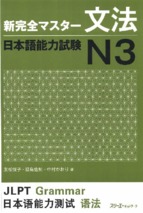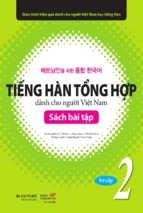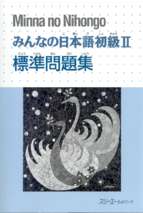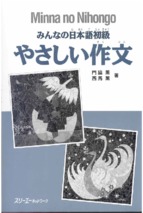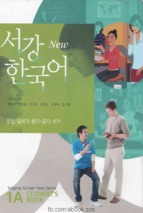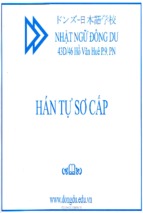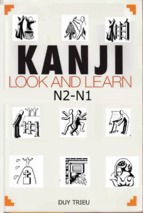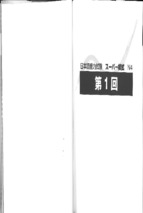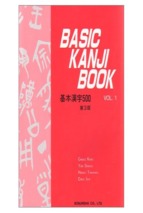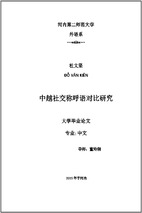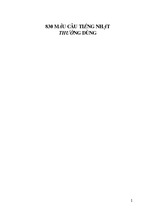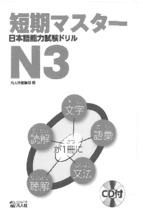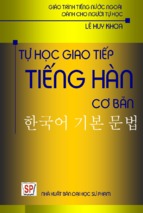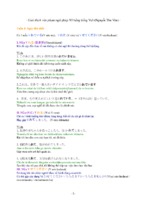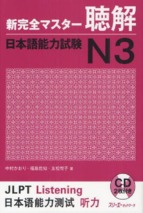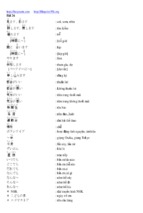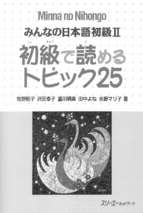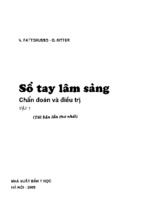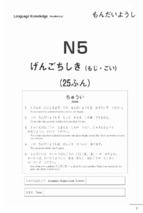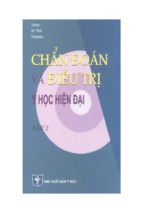Mô tả:
4
영어권 『맞춤 한국어』는 한글학교에서 한국
음과 같다. 첫째, 주제에 따라 3개의 단원을
어를 배우는 영어권 어린이들을 위한 교재이
하나의 챕터로 구성했다. 하나의 챕터 안에서
다. 그 중 4권인 본 교재는 초등학교 3, 4학년
어휘와 문형을 충분히 연습할 수 있도록 했으
수준의 학생에게 초점을 맞춘 교재로 기초적
며 각 챕터의 마지막 단원에서는 앞에서 배운
인 한국어 문장을 반복적으로 학습하면서 자
내용을 복습하고 과제를 통해 이를 활용해 볼
연스럽게 한국어에 친숙해질 수 있도록 하였
수 있도록 구성했다. 둘째, 문법이 아닌 문형
다. 또한 한국어를 배우기 시작한 지 얼마 안
중심으로 교육 내용을 구성하였다. 교실에서
된 어린 학습자들이 한국어가 재미있고 쉽다
배운 내용을 가정이나 또래집단에서 곧바로
는 첫인상을 가질 수 있도록 어린이들의 눈높
활용할 수 있도록 하려면 문형 중심의 교육이
이에 맞는 재미있고 다양한 활동을 중심으로
실용적이라고 판단하였기 때문이며, 이때 다
구성하였다.
양한 연습 유형과 활동으로 학습에 대한 부담
본 교재는 한글학교의 교육 과정을 고려하
을 덜어주려 하였다. 셋째, ‘해요’체를 사용하
여 개발되었다. 한 학기의 수업 시간(주 1회
여 모든 본문을 구성하였다. 실제 생활에서 활
2~3기간)에 맞게 전체 단원을 16개로 정하고
용도가 가장 높은 것이 ‘해요체’이며 그런 의
한 주에 한 단원을 학습할 수 있도록 단원별
미에서 ‘해요’체에 먼저 익숙해지는 것이 효
학습 내용을 구성하였다. 그리고 학습자들이
용성이 높기 때문이다.
해외에 거주하는 점을 감안하여 한국과 한국
교재는 모두 16개의 학습 단원으로 이루어
문화를 자연스럽게 접할 수 있도록, 그리하여
져 있다. 교재의 구성은 본문을 중심으로 새
궁극적으로는 국제 사회에 대하여 열린 마음
로 나온 단어와 문형을 익히는 ‘배워 봐요’, 배
을 가질 수 있도록 ‘한국 문화’에 대한 소개란
운 내용을 자연스러운 맥락에서 연습해 보는
을 별도로 두었다. 또한 학습자가 어린이들이
‘연습해요’, 새로 배운 단어와 문형을 사용하
라는 점을 염두에 두고 어린이들의 특성과 눈
여 말하고, 듣고, 읽고, 쓰는 연습을 하는 ‘이
높이에 맞는 교재를 개발하고자 하였다. 무엇
야기해요’, ‘들어 봐요’, ‘읽어 봐요’, ‘써 봐요’,
보다 학습자들이 영어권 어린이들이라는 점
그리고 어린 학습자가 흥미를 가질 주제를 선
을 고려하여 본문을 제외한 모든 학습 내용과
정해 문화 비교적인 관점에서 한국 문화를 배
연습 활동의 지시문, 문화 소개란의 지문을 한
울 수 있는 ‘문화 배우기’로 구성되어 있다. 교
국어와 영어로 제시하였으며, 부록으로 한국
재는 다음과 같이 구성되어 있다.
어와 영어 단어 색인, 본문의 영어 번역, 단원
별 학습 내용의 영어 소개란을 두었다.
내용 구성에 있어서 본 교재의 특성은 다
2
맞춤 한국어
교재 구성
▣ 읽어 봐요
학생들의 언어문화적 지식을 확장시킬 수
있도록 고안된 다양한 읽기 자료를 제공했다.
본문은 단원에서 목표로 하는 문형과 어휘
를 포함하고 있는 4문장 정도의 간단한 대화
▣ 들어 봐요
문 또는 서술문으로 제시하였다. 본문에 맞
배운 것을 강화시켜줄 수 있는 대화 자료를
는 그림을 삽화로 제시하여 이해를 돕고자 하
제공했다. 또한 일상 대화뿐만 아니라 듣기 능
였다.
력을 향상시켜 줄 수 있는 안내 방송 등의 다
양한 자료를 제시했다.
▣ 배워 봐요
▣ 써 봐요
단원에서 배워야 하는 단어와 문형을 그림
쓰기 활동을 통해 배운 단어와 표현을 확
과 함께 제시하였다. 단어 중 동사의 경우 기
인해 보도록 한 단원의 마무리 학습 부분이
본형을 가려 쓰지 않고 활용형 ‘해요체’로 제
다. 각 단원의 주제에 맞는 내용으로 학습자
시하였다. 문형을 제시할 때에는 목표 문형
들이 자신의 생각이나 경험을 써 볼 수 있도
(문법) 부분은 글자의 색깔을 다르게 하여 시
록 하였다.
각적으로 부각시키고자 하였다. 또한 모든 내
용에 영어 번역을 병기하여 학습자의 이해를
돕고자 하였다.
▣ 문화 배우기
‘문화 배우기’는 사진이나 그림 자료와 함
께 한국 문화를 소개하는 란이다. 여기서는
▣ 연습해요
일방적인 한국 문화의 소개가 아니라 학습자
새로 배운 내용을 바탕으로, 자연스럽고 적
가 속한 문화권의 문화와 자연스럽게 비교해
절한 문맥에서 배운 것을 연습할 수 있도록
보도록 함으로써 문화 상대주의적 시각을 기
설계하였다.
를 수 있도록 하였으며, 다양한 한국 문화의
모습과 어린이들이 흥미를 가질 만한 소재를
▣ 이야기해요
다루었다.
새로 배운 단어나 문형을 짝 활동 또는 모둠
활동을 통해 직접 사용해 볼 수 있도록 하였
다. 제시된 그림을 보며 예시 대화문과 같은
형식으로 말하기 활동을 할 수 있다.
일러두기
3
Introduction
Korean School: Korean Language is a
textbook used in Korean school for Englishspeaking children. Four volumes of the text
are used as a core text to instruct third and
fourth year elementary school students in
the rudiments of Korean language related
to daily life. The book contains interesting
subjects and a variety of activities to facilitate
learning.
The textbook was designed with the
concerns of education in mind. The text
is intended to be easily adaptable in the
classroom as it contains 16 units (1 unit
per week, each lesson lasting 2-3 hours). A
review chapter follows every third chapter to
solidify learning and to enrich understanding.
In consideration of those students residing
outside of Korea, efforts have been made to
teach Korean culture within a global context
allowing for a basic framework for studies
in comparative culture. With the needs
of English-speaking learners in mind, the
instructions for all activities are given in both
Korean and English. As well, students may
consult the appendix at the back of the book
as well as a glossary of terms for translated
Korean terms.
they learned in the preceding two lessons
with fun activities and exercises. Secondly,
rather than concentrating solely on drilling
grammar rules, the book focuses on teaching
students common phrases and readily useable
sentences. It is our goal to teach students
from a practical standpoint so that they may
use what they learned to begin speaking right
away. Finally, the book emphasizes using the
“hae-yo” form of Korean. As this form is the
most commonly used in casual conversation,
we believed it would be the most pragmatic
approach to learning the Korean language.
The following explains in greater detail, the
contents of the book:
Book Content
Every unit in the book is devoted to teaching
key vocabulary words and sentence patterns
presented by giving sample dialogues as well
as descriptive sentences. Illustrations and
pictures accompany the subjects presented in
the text to assist learning.
The special features of the textbook are as
follows. First, the book is sectioned according
to the topic with three lessons composing
one chapter. In the last lesson of each
chapter, students review and practice what
4
맞춤 한국어
▣ Let’s Learn!
Key vocabulary terms and expressions
are presented in each unit. New vocabulary
is presented through various exercises such
as reading and listening. Wherever possible,
variant parts of speech for each new word are
presented (noun, verb, adjective, and adverb.)
Every unit also contains 4 grammatical
sentence types as well as expressions which
are highlighted by a different color in the text
to heighten awareness. In addition, in order
the aim of expanding linguistic and cultural
knowledge.
▣ Let’s Listen!
Students will be able to listen to a
dialogue to illustrate the key concepts of
the chapter in order to reinforce learning.
Besides conversations, students will listen to
announcements and other sound samples in
order to improve their listening skills.
to assist learning, the contents of this section
are rendered in English alongside the Korean.
▣ Let’s Write!
▣ Let’s Practice!
In order to reinforce their learning of
key expressions and words, students are
presented with an opportunity to write on a
selected topic for each unit.
This section presents an opportunity
to practice new knowledge. Students are
encouraged to use what they have learned
within an appropriate, natural context.
▣ Let’s Talk!
Students can practice using new vocabulary
and sentence patterns in speech. Natural
dialogues are given wherein students can
actively participate.
▣ Let’s look at Korean culture!
Photographs or illustrations are included to
introduce an aspect of Korean culture. This is
an opportunity for students to compare and
contrast their own culture to Korean culture.
The topics for discussion are chosen with the
needs and interests of young learners in mind.
▣ Let’s Read!
Students are presented with a variety of
reading pieces from diverse sources with
일러두기
5
목 차
01 가수가 되고 싶어요 I want to become a singer‥ ‥‥‥‥‥‥‥‥‥‥‥‥‥10
02 주말에 그림을 배워요 I learn to draw on weekends‥‥‥‥‥‥‥‥‥‥‥‥‥16
03 금요일에 학교에서 컴퓨터 수업을 들어요 We take computer class on Friday at school‥ ‥22
04 연극은 몇 시에 시작해요? When does the play start?‥‥‥‥‥‥‥‥‥‥‥‥30
05 다섯 시부터 세 시간 동안 축제를 해요 There is a three hour festival that starts at five o’clock‥ 36
06 일주일 후에 전시회가 있어요 The exhibition will be held a week from now‥‥‥‥‥42
07 가방이 얼마예요? How much is the bag?‥‥‥‥‥‥‥‥‥‥‥‥‥‥‥‥50
08 음악회가 며칠이에요? What date is the concert?‥ ‥‥‥‥‥‥‥‥‥‥‥‥56
09 동생은 졸업식에 못 갔어요 My younger brother could not go to the graduation ceremony‥ ‥62
6
맞춤 한국어
10 서울은 날씨가 좋아요 The weather in Seoul is good‥ ‥‥‥‥‥‥‥‥‥‥‥70
11 주말에 뭘 해요? What do you do on the weekends?‥‥‥‥‥‥‥‥‥‥‥‥‥76
12 방학 때 캠프에 갈 거예요 I will go to a camp during vacation‥ ‥‥‥‥‥‥‥‥82
13 놀이공원까지 어떻게 가요? How do you get to the theme park?‥ ‥‥‥‥‥‥‥90
14 우체국까지 얼마나 걸려요? How long does it take to go to the post office?‥ ‥‥‥‥96
15 박물관에서 집까지 15분쯤 걸렸어요 It took about fifteen minutes from the museum to the house‥102
16 저는 야구 선수가 될 거예요 I will become a baseball player‥‥‥‥‥‥‥‥‥ 110
▣ 부록‥‥‥‥‥‥‥‥‥‥‥‥‥‥‥‥‥‥‥‥‥‥‥‥‥‥‥ 118
한글학교 한국어
7
등장인물
슬기
성진
수연
8
맞춤 한국어
민수
재우
보람
미라
준영
한글학교 한국어
9
제1과
Lesson 1
가수가 되고 싶어요
I want to become a singer
1
뭐가 되고 싶어요?
가수가 되고 싶어요.
노래를 좋아해요?
네. 그래서 노래를 자주 해요.
나는 수의사가 되고 싶어요.
나는 동물을 정말 좋아해요.
10
맞춤 한국어
Lesson
1
어휘 Vocabulary
장래 희망
가수
경찰
hopes for the future
singer
police officer
모델
운동선수
소방관
model
athlete
fireman
과학자
scientist
수의사
veterinarian
학년
grade
화가
artist
가을
fall
용감해요
to be brave
문법 및 표현 Grammar and Expression
(1) 우리는 4학년이 되었어요. We became forth graders.
(2) 오빠는 축구 선수가 되었어요. My older brother became a soccer player.
(3) 동생은 가을에 초등학생이 돼요.
My younger sister/brother will become an elementary school student in the fall.
(4) 가: 아침에 뭘 먹고 싶어요? What do you want to eat in the morning?
나: 빵을 먹고 싶어요. I want to eat bread.
(5) 가: 토요일에 뭐 하고 싶어요? What do you want to do on Saturday?
나: 자전거를 타고 싶어요. I want to ride a bike.
제1과 | 가수가 되고 싶어요
11
1. 그림과 단어를 알맞게 연결해 보십시오.
Match the words with the pictures.
화가
모델
경찰
소방관
과학자
2. 그림을 보고 알맞은 말을 써 보십시오.
Complete the sentences using the pictures.
(1)
뭘 먹고 싶어요?
불고기를
(2)
.
방학 때 뭐 하고 싶어요?
서울에
(3)
뭘
.
?
책을 사고 싶어요.
그래서 서점에 가요.
(4)
뭐가
?
과학자가 되고 싶어요.
(5)
가수가 되고 싶어요?
아니요.
12
맞춤 한국어
.
Lesson
1
⊙ 우리 반에 새 친구가 왔습니다.
새로 온 친구에게 <보기>와 같이 궁금한 내용을 물어보십시오.
A new friend came to our class. Ask your new friend a few questions as in the example below.
보기
안녕하세요?
저는 신미나입니다.
야구와 농구를 좋아합니다.
그러면 축구도 좋아합니까?
네. 축구도 좋아합니다.
저는 운동선수가 되고 싶습니다.
제1과 | 가수가 되고 싶어요
13
⊙ 선생님하고 우리 반 친구들이 이야기를 합니다. 다음을 잘 듣고 대답해 봅시다.
The teacher and students are talking about their hopes for the future.
Listen carefully and answer the questions.
(1) 무슨 이야기를 하고 있어요? (
What are they talking about?
① 소방관
② 과학자
③ 장래 희망
(2) 다음 중 틀린 것은 뭐예요? (
14
)
)
Which of the following descriptions is incorrect?
① 소방관은 용감해요.
② 재우는 과학자가 되고 싶어요.
③ 재우는 소방관이 되고 싶어요.
맞춤 한국어
2
문화 배우기
Let's look at Korean culture!
아리랑
Arirang
■■■
Arirang, a Korean folk song which every Korean can sing, is known even amongst
foreigners. ‘Arirang(아리랑)’ is an ancient native Korean word with no direct
modern meaning and doesn’t have a fixed form. It has various melodies and forms
arranged by residents in various regions. Titles of different versions of the song
are usually compounded by their place of origin or some other kind of signifier.
Let’s sing Arirang sung by most people like together.
한글학교 한국어
15
제2과
Lesson 2
주말에 그림을 배워요
I learn to draw on weekends
3
나는 그림 그리기를 좋아해요.
그래서 화가가 되고 싶어요.
그림을 잘 그려요?
아니요. 그래서 주말에 그림을 배워요.
나도 그림을 배우고 싶어요.
그래요? 그러면 같이 배워요.
16
맞춤 한국어
Lesson
2
어휘 Vocabulary
월요일
화요일
Tuesday
Wednesday
Thursday
금요일
동아리
만화책
주
Monday
Friday
club
수요일
comic book
모습
figure
초대해요
to invite
목요일
week
꼭
at any cost
같이
together
문법 및 표현 Grammar and Expression
(1) 저는 일요일에 야구장에 가요. I will go to the baseball stadium on Sunday.
(2) 우리는 토요일에 한글학교에 가요. We go to Korean school on Saturday.
(3) 가: 무슨 요일에 수영을 배워요? On what day of the week do you learn swimming?
나: 수요일에 배워요. I learn it on Wednesdays.
(4) 우유와 빵을 먹어요. I eat milk and bread.
(5) 도서관에서 동화책과 만화책을 빌렸어요.
I borrowed fairy tale books and comic books from the library.
(6) 가: 생일에 뭘 받고 싶어요? What do you want for your birthday present?
나: 책과 가방을 받고 싶어요. I want a book and a bag.
제2과 | 주말에 그림을 배워요
17
1. 그림을 보고 알맞은 단어를 써 보십시오.
Complete the sentences using the pictures.
(1)
에 병원에 가요.
(2)
에 한글학교에 가요.
(3)
에 생일 파티가 있어요.
(4)
에 공원에서 자전거를 타요.
(5)
에 수영장에서 수영을 배워요.
2. 그림을 보고 알맞은 말을 써 보십시오.
Complete the sentences using the pictures.
(1)
언제 박물관에 갔어요?
지난 금요일
(2)
월요일에 한국어를 배웠어요?
아니요, 토요일
(3)
인형이 있어요.
생일에 누구를 초대했어요?
슬기
(5)
배웠어요.
책상 위에 뭐가 있어요?
가족사진
(4)
갔어요.
보람이를 초대했어요.
백화점에서 뭘 샀어요?
을 샀어요.
18
맞춤 한국어
Lesson
2
⊙ 여러분은 미래에 뭐가 되고 싶어요? 그 직업을 가진 어른에게 무엇을 질문하고
싶어요? <보기>와 같이 인터뷰해 봅시다.
What would you like to ask an adult about your dream job? Interview him/her as in the example below.
보기
저는 4학년 김재우입니다.
저는 책 읽기를 좋아해요.
그래서 작가가 되고 싶어요.
그래요? 저도 학생 때 책 읽기를 좋아했어요.
그래서 매일 책을 읽었어요.
그리고 일기도 꼭 썼어요.
제2과 | 주말에 그림을 배워요
19
⊙ 학생들이 한 학기 동안 배운 것을 발표합니다. 다음 글을 잘 읽고 대답해 봅시다.
Students present what they have learned during this semester.
Read the following carefully and answer the questions.
★이번 주 토요일에 부모님과 가족들을 학교에 초대합니다.
과학반과 미술반에서 발표회를 준비했습니다.
◐ 과학반 : 물 로켓 만들기
◐ 미술반 : 나의 미래 모습 그리기
장래 희망 발표하기
★과학반 학생들은 부모님과 함께 과학실에서 모입니다.
그리고 미술반 학생들은 미술실에서 발표회를 합니다.
(1) 토요일에 무엇을 해요?
What do they do on Saturday?
(2) 다음 중 틀린 것은 뭐예요? (
)
Which of the following descriptions is incorrect?
① 학생들은 장래 희망을 발표해요.
② 우리 가족의 미래 모습을 그려요.
③ 과학반 학생들은 로켓을 만들어요.
(3) 여러분은 학교 동아리에서 무엇을 배웠어요?
위와 같이 초대장을 만들어 보십시오.
20
What did you learn in your school club? Create an invitation card as in the example above.
맞춤 한국어
- Xem thêm -

